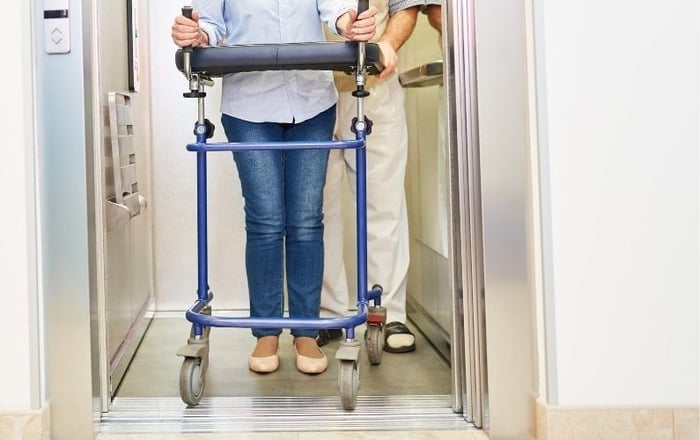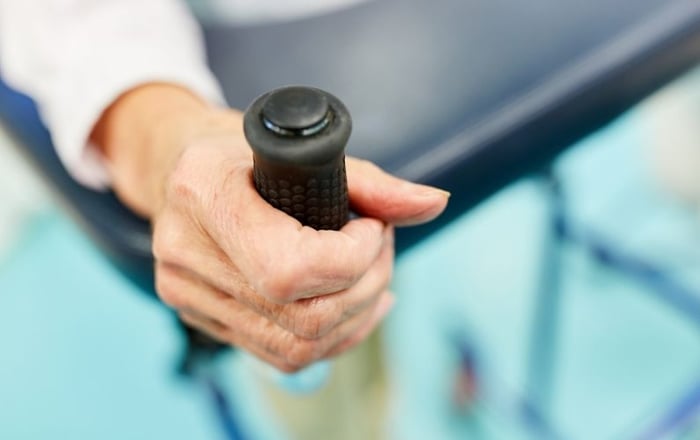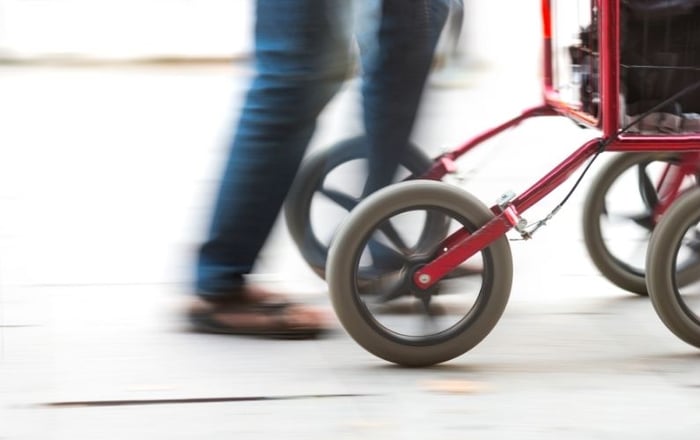Is this your first time using a folding walker or rollator? Learn how to use a walker properly in this complete guide for new users.
You’ve just gotten out of knee surgery. Everything went well but you’re going to need to use a walker for a few weeks to get around while you heal up. This is your first time using a walker so you’re a bit clumsy on how it works.
The nurses have given you basic instructions on how to use a walker but you’re still worried that you may fall and hurt yourself. Learning the ropes isn’t as easy as it looks. We can help you keep your balance.
Check out this beginner’s user guide to learn how to use a folding walker properly and with confidence.
How to Use a Walker: A Guide for Beginners
1. Adjusting Your Walker
Before you begin walking around, you've got to adjust the walker so it's comfortable for you to use. If it's too high or too low, using it will put a lot of strain on your back and shoulders and increase your risk for injury.
If you can, the best thing you can do is ask a health care professional to make the adjustments for you. They're experts in their field for a reason. They'll know exactly what height will make the walker fit your stature.
If you have to adjust the walker yourself, make sure that it's comfortable for you. You shouldn't have to overbend your elbows.
If you're not sure if it's at the correct height or not, place your hands by your side. The top of the walker should line up with the inside of your wrist.
2. Walking 101
Now that your walker is at the correct height, it's time to start walking. If your walker has wheels, all you'll have to do is push it forward. If it doesn't have wheels, you'll have to pick it up.
Either way, extend the walker out a few inches or at arm's length. Don't take a single step until all four legs of the walker are firmly on the ground. When you do step forward, do so with the weak leg first and follow it up with the stronger one.
If you've had surgery done on both legs, go with the one that you feel is your weaker leg. Repeat these steps and you should be able to get anywhere you need to go.
3. From Sitting to Standing
So, you're enjoying an afternoon of TV watching when you remember you need to get up and grab your medicine. Place the open side of your walker out in front of you within arm's reach.
Lean forward out of your chair and use your arms to stand up. Don't use the walker to pull yourself up or you'll fall.
Once you're in a full standing position, you can put your hands on the handles of the walker. Make sure you're good and steady before you begin walking.
4. From Standing to Sitting
So, now you want to get back into your chair. What do you do in this case? Turn so your back is to the chair and back up.
Reach your hand back and grasp onto the armrest. Slowly reach out your second hand and grasp the other armrest.
Extend your leg and lean back until you are sitting in the chair again. Go as slow as you need to during this process.
5. Tackling Steps and Curbs
If you're stepping up, place the walker on the step in front of you. If you're going down, place the walker on the one below you.
This can be a little bit tricky so if you don't feel confident doing it, don't be afraid to ask for assistance. Be sure that all four wheels are on a solid surface before you move again.
To step up on the curb, move with your strong leg first. Place all your weight on the walker and then go up with your weak leg. You'll do the same thing when you're going down steps except you're stepping down, not up.
6. Additional Safety Tips
Never hunch over when you're using your walker. If you hunch you'll put more strain on your body when you're walking. When you're turning to change direction, do so slowly and take tiny steps.
Your walker should always be in front of you. Never behind. Trade out your regular shoes for ones that have rubber soles.
Don't put the walker too far out in front of you or you'll increase your risk of falling.
Tackling small curbs and steps is fine but don't try to handle staircases unless you've been working with a physical therapist on the matter or you have someone around to assist you.

7. Getting Your House Ready
Going off our last point about walker safety, you'll need to get your house ready to accommodate you as well. Pick up any rugs you have. They look nice but they are a hazard.
Secure any cords that are running along the floor. You can accomplish this with tape. Get any clutter off the floor and make sure that your floors are dry at all times.
You can reduce the amount of time you spend walking around your house by attaching a basket to your walker to hold your medicines and other things you need.
How to Use a Walker and Keep Your Independence
Learning how to use a walker after going through surgery can be rough. Not everyone takes to it naturally but with the help of trained medical professionals and physical therapists, you'll be well on your way to healing while keeping your independence.
Buying the right walker for you will make the learning process even easier. Check out our shop to find your ideal rolling walker.










